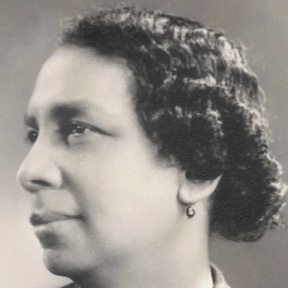 Nestled within the quaint Baltimore City residential community of Madison Park stands the Lillie Carroll Jackson Civil Rights Museum — the second of Morgan State University’s two university-owned and operated museums. The museum has been officially added to the prestigious National Register of Historic Places.
Nestled within the quaint Baltimore City residential community of Madison Park stands the Lillie Carroll Jackson Civil Rights Museum — the second of Morgan State University’s two university-owned and operated museums. The museum has been officially added to the prestigious National Register of Historic Places.
In 1933, Lillie Jackson agreed to serve as chairperson of the reorganization committee of the Baltimore Branch of the NAACP. Later she was elected president of the Baltimore Branch of the NAACP. Under her leadership, the NAACP membership rose from less than 200 in 1935 to over 25,000 by 1946. She remained president until 1970.
Dr. Jackson died in 1975 and willed her home to Virginia Jackson-Kiah, her eldest daughter. She is credited with developing the home into a museum. It opened in 1978, as Baltimore’s first privately owned museum honoring an African American woman. The property was later transferred to Morgan State University to continue the development of the Lillie Carroll Jackson Civil Rights Museum. The museum reopened its doors on June 11, 2016, after considerable restoration, rehabilitation, and modernization.
 Today, the Lillie Carroll Jackson Civil Rights Museum features meticulously curated exhibits, artifacts, and interactive displays that showcase pivotal moments and individuals in the civil rights movement. Through engaging storytelling and immersive experiences, the museum provides visitors with a profound and insightful journey into the struggles and victories that have shaped the nation’s history. In 2018, the museum received a Maryland Preservation Award, and in 2019, received a grant award from the Institute of Museum and Library Services to fund the development of a programmatic, civil rights-based educational curriculum aimed at Baltimore City middle school and high school students.
Today, the Lillie Carroll Jackson Civil Rights Museum features meticulously curated exhibits, artifacts, and interactive displays that showcase pivotal moments and individuals in the civil rights movement. Through engaging storytelling and immersive experiences, the museum provides visitors with a profound and insightful journey into the struggles and victories that have shaped the nation’s history. In 2018, the museum received a Maryland Preservation Award, and in 2019, received a grant award from the Institute of Museum and Library Services to fund the development of a programmatic, civil rights-based educational curriculum aimed at Baltimore City middle school and high school students.











